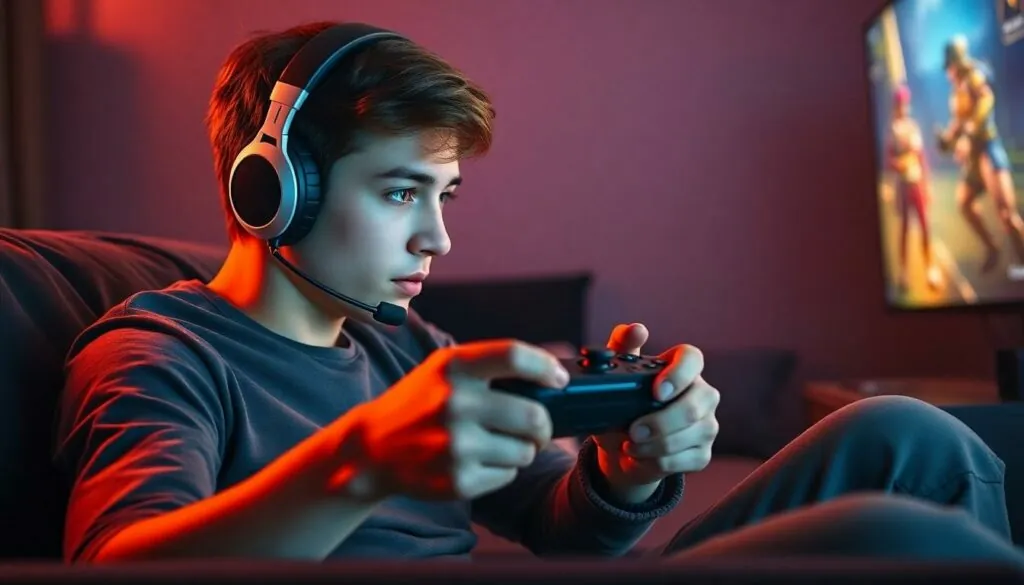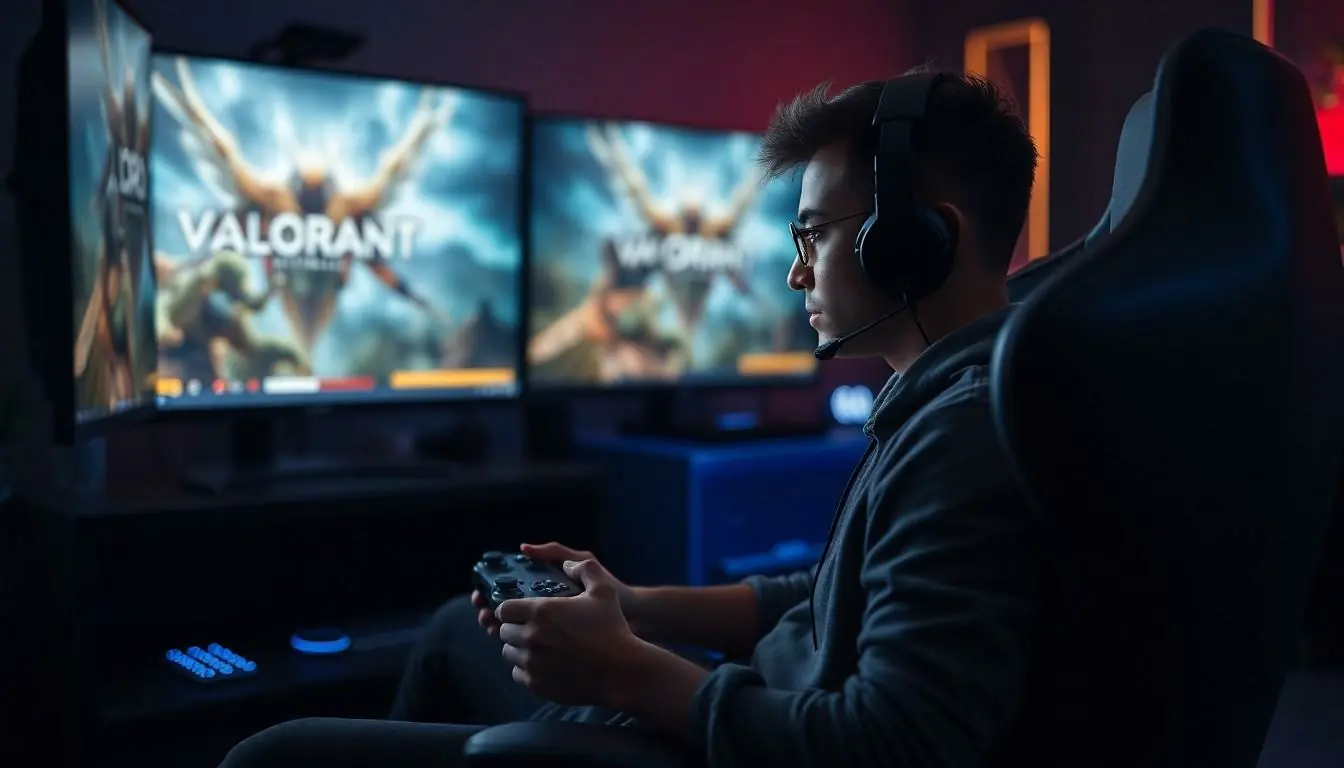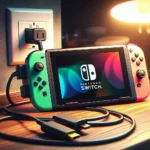Table of Contents
ToggleValorant has taken the gaming world by storm, but one burning question lingers in the air: can you really use a controller to play? While most players swear by their trusty mouse and keyboard, there’s a growing crowd of gamers itching to plug in their controllers and show off their skills. After all, who wouldn’t want to channel their inner console warrior while navigating the tactical chaos of Valorant?
Imagine pulling off a slick headshot with the finesse of a pro while lounging on your couch. Sounds dreamy, right? But before you dive headfirst into the controller life, it’s crucial to understand how it stacks up against the classic setup. Buckle up as we explore the ins and outs of using a controller in Valorant and whether it can elevate your game or leave you in the dust.
Overview of Valorant
Valorant stands out as a tactical first-person shooter developed by Riot Games. This game incorporates a character-based system that provides players unique agents with distinct abilities. The blend of precise shooting mechanics and strategic gameplay fosters an engaging experience, attracting a diverse player base.
Competitive play forms the core of Valorant, demanding teamwork and communication. Matches consist of two teams, each with five players, vying to complete objectives. Rounds switch between attacking and defending, emphasizing planning and adaptation throughout gameplay.
Maps feature varied layouts, fostering tactical depth and encouraging players to explore different strategies. Positions, angles, and sightlines create opportunities for outsmarting opponents. Dynamic environments contribute to this competitiveness by offering varied terrain and cover options, rewarding players who adapt quickly.
Valorant’s gradient skill levels cater to all players, from beginners to veterans. Rating systems help match players of similar skills, enhancing the competitive experience. With updates and new content regularly introduced, Riot Games maintains the game’s freshness and engagement over time.
Using a controller in Valorant raises intriguing questions about playstyle and effectiveness. Some players find comfort in joystick control, while others prefer the precision of mouse and keyboard. This choice ultimately affects player performance, influencing factors such as aim accuracy and reaction time. The game’s mechanics and design encourage exploration of controller options, making it relevant for discussions in the gaming community.
As Valorant continues to evolve, community feedback remains invaluable. Player preferences shape development, ensuring that both controller and mouse/keyboard users can enjoy a balanced experience. The game’s success relies on maintaining an inclusive environment for all types of players.
Controller Compatibility
Using a controller with Valorant is possible, though traditionally the game favors mouse and keyboard setups. Players often seek alternate methods that enhance comfort or suit personal preferences.
Supported Controllers
Valorant supports various controllers, including popular options like Xbox and PlayStation controllers. These devices are often recognized without additional software. Custom configurations may enhance gameplay experience, allowing for tailored control schemes that fit individual playstyles.
Connection Methods
Connecting a controller to Valorant can occur through wired or wireless methods. USB connections provide a direct approach, ensuring minimal latency. Bluetooth offers flexibility, though it may introduce slight input delays. Users should ensure their controllers are properly configured to optimize performance in-game.
Advantages of Using a Controller
Using a controller in Valorant offers several benefits that enhance the gaming experience. Players often find that controller setups provide distinct advantages, particularly in comfort and precision.
Enhanced Comfort
Comfort stands out as a primary advantage when using a controller. Players can relax on their couches, enjoying extended gaming sessions without discomfort. Ergonomic designs of many controllers promote a natural grip, reducing strain on hands and wrists. This comfort might lead to increased focus and longer gameplay sessions, as players can immerse themselves into the game without physical fatigue. Various controller options cater to different preferences, ensuring customization to fit individual needs.
Precision Aiming
Precision aiming becomes a more manageable task with a controller. Players can leverage analog sticks for finesse, allowing for smoother movements. This fine control often results in improved accuracy, especially during tracking and flick shots. Advanced settings, such as sensitivity adjustments, further enhance aiming capabilities, enabling players to tailor responsiveness based on their playstyles. Additionally, the ability to use aiming assist features in-game can help compensate for any minor input delays, transforming controller users into formidable opponents.
Disadvantages of Using a Controller
Using a controller in Valorant presents notable drawbacks that players should consider. Understanding these disadvantages can help gamers make informed decisions about their input devices.
Limited Customization
Limited customization options impact controller users significantly. Unlike mouse and keyboard setups, where key bindings can be extensively modified, controllers often offer fewer configuration choices. Players may find themselves restricted in tailoring their controls for specific gameplay preferences. While certain controllers allow for button remapping, not all provide the same level of flexibility. Consequently, this lack of personalization may hinder a player’s ability to maximize their potential in intense situations.
Competitive Disadvantages
Competitive disadvantages emerge when using a controller in Valorant. Precision movements typically required in tactical scenarios benefit from a mouse’s accuracy. Players using controllers may struggle with rapid aiming and quick flicks essential for securing crucial kills. Additionally, many competitive players rely on advanced settings and scroll wheel features not available on controllers. Given the emphasis on teamwork and strategic play in Valorant, every slight advantage counts, and relying on a controller could impede overall performance in high-stakes matches.
Player Experiences
Experiences from players using controllers in Valorant can vary significantly. While some players embrace the comfort of controllers, others express concerns about precision.
Professional Opinions
Professional gamers often favor mouse and keyboard setups due to precision advantages. Many competitive players appreciate rapid aiming capabilities only offered by a mouse. Features like custom sensitivity settings and quick flicking techniques play a large role in this choice. Some professionals, however, acknowledge the potential of controllers, particularly for casual play and comfort. Controllers allow for smoother analog movement, which can lower fatigue during extended gameplay sessions. Ultimately, professional opinions highlight that individual preference and playstyle heavily influence the effectiveness of each setup.
Casual Gamer Insights
Casual gamers typically enjoy the relaxed feel of using a controller in Valorant. Many find that it enhances their overall enjoyment, especially during longer gaming sessions. Comfort becomes a significant factor, as controllers allow players to sit back without straining. While some casual players report struggles with precision, others believe that comfort outweighs these challenges. Advanced settings on modern controllers can provide a competitive edge too. Casual insights reveal that prioritizing enjoyment leads to significant engagement, regardless of the potential drawbacks in high-pressure scenarios.
Conclusion
Using a controller in Valorant offers a unique blend of comfort and gameplay experience. While it can enhance enjoyment for casual players, the precision required in competitive scenarios often favors mouse and keyboard setups. Players must weigh the ergonomic advantages against potential limitations in customization and rapid aiming capabilities.
As the game continues to evolve, the community’s feedback will shape how both controller and traditional setups coexist. Ultimately, whether to use a controller or not depends on individual preferences and playstyles. Embracing what feels comfortable can lead to a more enjoyable gaming experience, regardless of the competitive landscape.





